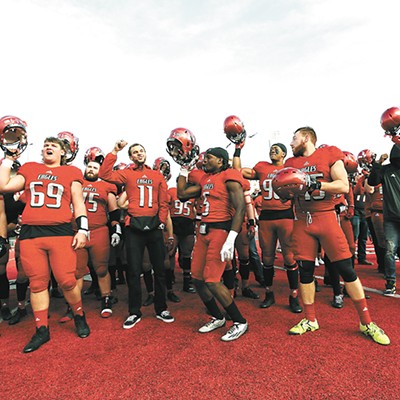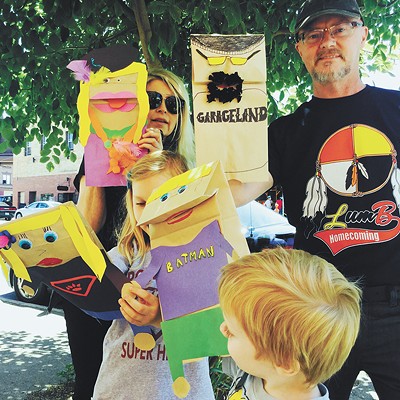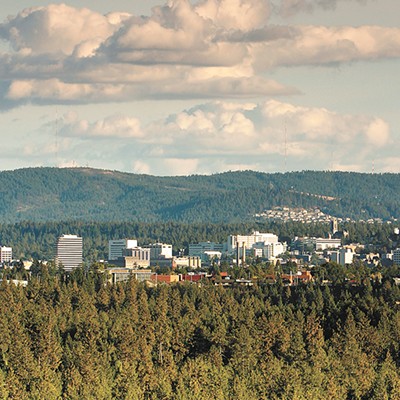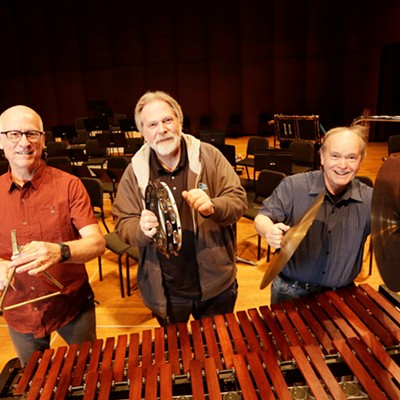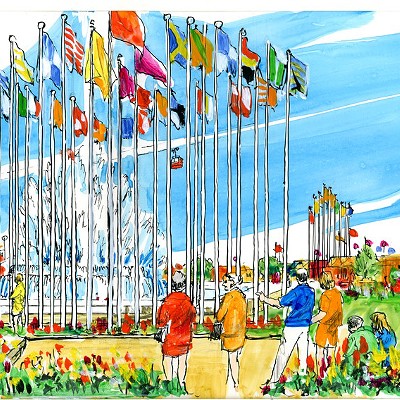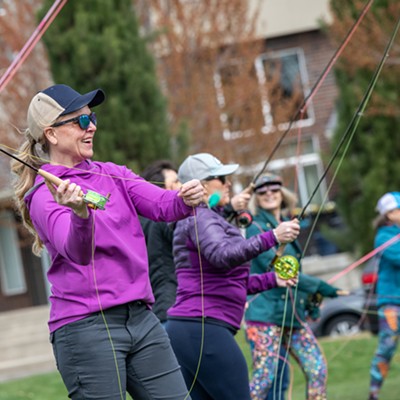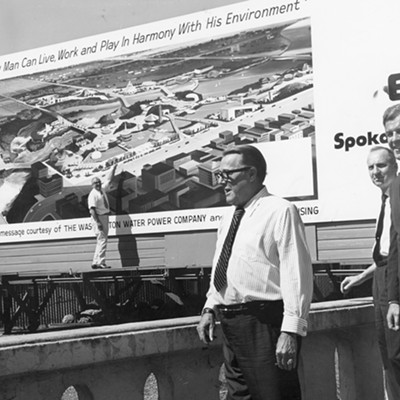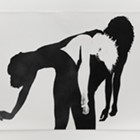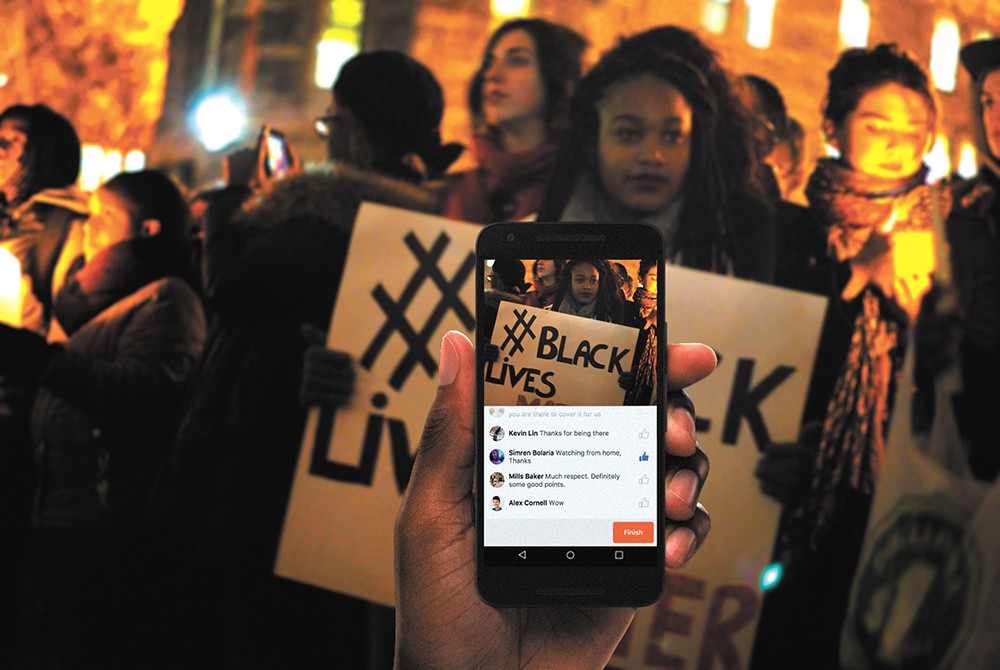
The most riveting, suspenseful and — at times — terrifying media event of this year came back in February. And it wasn't on TV. It wasn't even a video. It was a marathon of livestreaming phone calls from Washington state libertarian activist Gavin Seim, speaking with the final holdouts among the armed occupiers of the Malheur National Wildlife Refuge in eastern Oregon.
Stretching across two days and eight and a half hours, it was at times a political rally, a far right-wing history lesson, a counseling session, a religious intervention and a recitation of conspiracy theories.
But then the stream veered onto a darker path. One person had already died during the Oregon standoff. And David Fry, a 27-year-old occupier later diagnosed with schizotypal personality disorder by a forensic psychologist, was talking like he'd be the second.
"It's better to die with honor than to be forced to live dishonorably!" he yelled at Seim and the others on the call. "And so that's what I'm doing. Until you guys can address my grievances, you guys will probably have to kill me. Or watch me kill myself."
The listeners didn't know if they were going to hear a man shoot himself on air or charge at the feds with weapons.
"My life means nothing," Fry continued. "I'm not going to just let you do your job and walk away with clean hands. I'm going to give you dirty hands. Because you guys deserve it."
J.J. MacNab, a fellow at George Washington University's Program on Extremism, was one of the 50,000 viewers on the other side of the livestream. We both got that ugly feeling in our stomachs, the fear that we were listening to the audio equivalent of a snuff film.
"I had a finger on a button, ready to click it off if he committed suicide," MacNab says. Fry eventually gave himself up. But the experience lingers.
"It was like a cross between being a peeping Tom and virtual reality," MacNab says. "It is as real as it gets."
She followed the militia movement for a living, but these livestreams gave her the ability to go to places she'd never be allowed to go, hear conversations she wouldn't otherwise get to hear. It was audio voyeurism, simultaneously lurid and illuminating.
Increasingly, activists and amateur journalists have waded into the livestream, turning their smartphones and podcasting tools into unfiltered lenses, letting us eavesdrop upon the insight and insanity of the modern protest. Just as that had been true for the right at Malheur, it was true for the left in Portland this week, where outrage over Donald Trump's election as president turned into raucous — and at times violent — demonstrations.
Mike Bivins, a Portland State University student works night shifts at a local hospital, but his passion is freelance journalism: He livestreamed the Portland protests after Fry and the other Malheur occupiers were acquitted last month. And this past week, his cellphone has streamed scenes from the protests after Trump's election.
Cops march in riot gear. Protesters pound on the windows of cars driving through, screaming at the occupants. Bivins pans across shattered windows in Portland's Pearl District, as screams of anger and glee mix with the sound of glass breaking in the distance. Flash grenades careen through the air, blowing up into a shower of sparks and smoke in the middle of the crowd.
"I'm at the #TrumpRiot and it is without question a riot," Bivins writes on Twitter. "Chaos."
Bivins tells the Inlander that livestreams like his have advantages over traditional media outlets, allowing him to take more risks.
"I've put my phone in my mouth," Bivins says. "And I'll crawl up onto high spots and get a better vantage point easier, because I don't have a big camera weighing me down."
Cameras that cost $50,000 can't capture grit and upheaval like a cellphone can.
These days, news outlets like the Daily Mail will contact Bivins on Twitter, haggling over his footage from his Periscope app or his iPhone camera.Bivins says his inspiration for this sort of guerilla journalism comes from Bassem Masri, the aggressive, profane livestreamer during the 2014 riots in Ferguson, Missouri, who'd scream at cops that they were "coward pigs" and he was praying for their deaths. These aren't Bivins' preferred tactics. But the potential was obvious.
"This guy with a camera and thousands of people watching him?" Bivins says. "Holy shit, if he can do it, I can do it."
This is a medium that thrives under extreme, chaotic conditions — and sometimes rewards extremism and chaos: We tune in when anarchists light newspaper stands on fire in Portland or when cops fire tear gas into a throng of protesters in Ferguson, or when armed radicals threaten guns-a-blazing last stands against the feds.
For the unknown people hit with unimaginable tragedy, like the Minnesota woman who streamed her horror on Facebook Live as her boyfriend bled to death in her passenger seat after being shot by police, livestreams can amplify their screams so they can be heard by the entire nation. For others, just the knowledge that others are listening can be its own sort of salvation.
"The world is watching you right now," Seim assured the Oregon standoff holdouts. "50, 60,000 people."
During Fry's crucible of life-or-death desperation, amid his fears of government conspiracy and being sexually assaulted in prison, that worry was the most stark: That nobody was going to listen to what he had to say. Then came the livestream.
"That was the whole point," MacNab says. "This kid, this skinny kid from wherever, all of a sudden had a voice. He had power. It's an answer to his disenfranchisement. ... He's powerful now."
Fry, freed from prison at the end of October, returned to the Malheur National Wildlife Refuge last week, narrating a YouTube video of the experience. These days, he's much peppier.
"Were you guys terrified during the occupation at the wildlife refuge?" he jokingly asks a herd of cows near the refuge. "Moo! Nope, nope, they're not terrified."
As of Monday, the video had more than 3,000 views. ♦
This story has been updated.




